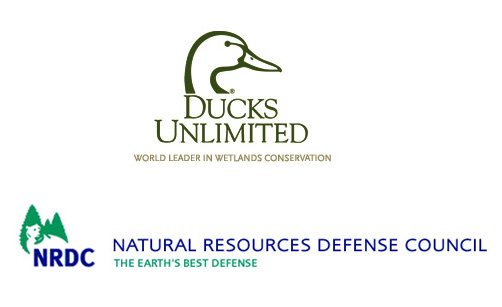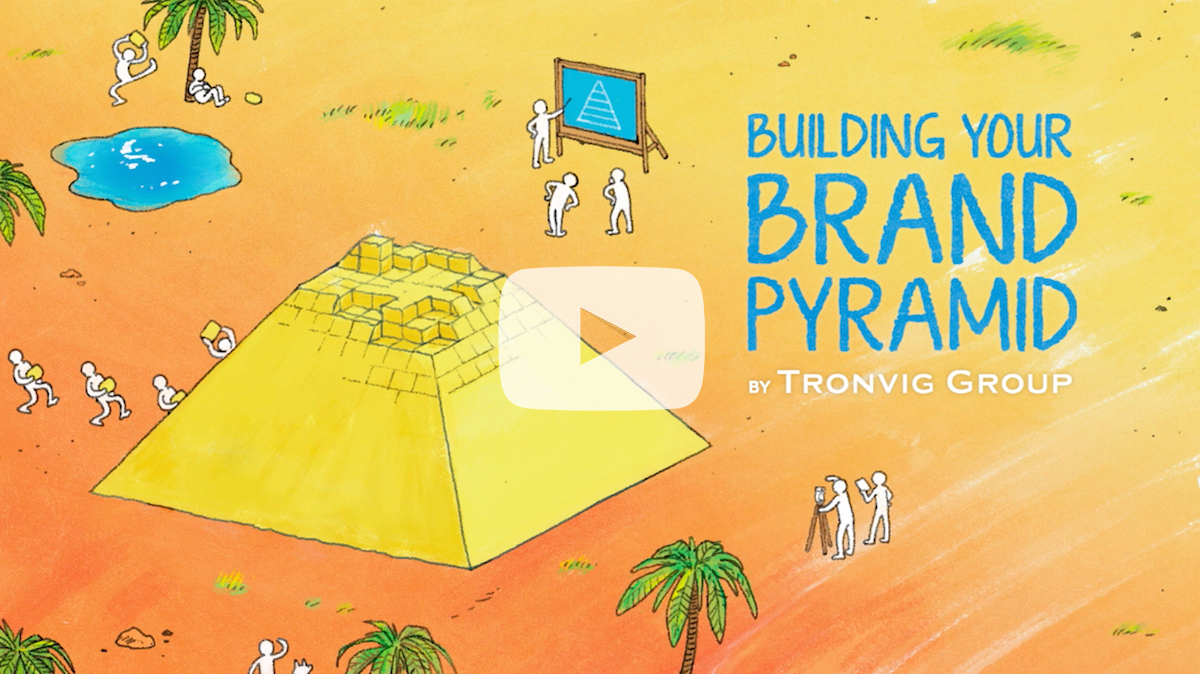What’s in a tagline?
The best taglines are not marketing slogans but statements of the truth that everyone can get behind.
For any organization, arguably your most important brand asset is your name. Some names are better than others at explaining why you exist and why you matter. So, along with the name, most organizations also need a tagline. The tagline can serve various roles. For a nonprofit its most important role is clarification. Some nonprofits have very practical taglines that do a good job of explaining why someone should support them. Others have taken on a very catchy marketing style and are often lofty sounding but vague. Sometimes these work. More often they do not.
The best taglines are not marketing slogans but statements of the truth that everyone can get behind.
Competition among nonprofit brands
All nonprofits who need to appeal to the public for funding or support must keep in mind that they are in competition. Nonprofits may not always look at themselves in these terms, but the brand challenge faced by all nonprofits is essentially the same as that of any other kind of organization that must engage with the public. To quote Michele Levy, “Give me something where I can quickly understand a fundamentally different benefit, or I’ll stick with what I’ve got, thanks.”
If I am visiting your home page without already knowing what you do or why I should care, what will I get from it in the first 30 seconds?
If I am visiting your home page without already knowing what you do or why I should care, what will I get from it in the first 30 seconds? The answer to this will give a very good general assessment of the online effectiveness of your institutional brand. It is possible to communicate a good deal through images and long-form text, but at the center is your ability to get across who you are in a sea of competitive offerings; your organizational name and tagline (or mission statement) are paramount. While not discounting how all the other elements help to support and clarify your brand, reducing it to just these elements helps to clarify some things.
A little test
Look at the following list of major environmental nonprofits. Assume you don’t know what they do—and in many cases you may not—then after reading all their names and taglines see in which cases you have been given a good answer to Ms. Levy’s question. In every case where the answer is not good enough, I would suggest that those brands still need work. (As my criteria for selecting this list I simply pulled all the “top” environmental charities from the American Institute of Philanthropy.)
Here they are with links and the taglines as they appear on their respective websites:
NONPROFIT LINK TAGLINE
| African Wildlife Foundation | Conserving Wildlife, Protecting Land, Empowering People |
| Alaska Conservation Foundation | ………………………………………………… |
| American Bird Conservancy | ABC conserves native birds and their habitats throughout the Americas |
| American Forests | 135 years of conservation action and advocacy |
| American Rivers | Thriving By Nature |
| Center for Biological Diversity | Because life is good. |
| Chesapeake Bay Foundation | Save the Bay + Saving a National Treasure |
| Conservation Fund | America’s Partner in Conservation |
| Conservation International Foundation | ………………………………………………… |
| Ducks Unlimited | World Leader in Wetlands Conservation |
| Earth Island Institute | You are here. |
| Earthjustice | Because the earth needs a good lawyer |
| Earthworks | Protecting Communities and the Environment |
| Environmental Defense Fund | Finding the ways that work |
| Friends of the Earth | We champion a healthy and just world. |
| Greenpeace Fund, Inc. | ………………………………………………… |
| Izaak Walton League of America | Defenders of soil, air, woods, waters, & wildlife |
| Keep America Beautiful – N.O. | Do something beautiful. |
| National Arbor Day Foundation | We inspire people to plant, nurture, and celebrate trees. |
| Natural Resources Defense Council | The earth’s best defense |
| Nature Conservancy | Protecting nature. Preserving life. |
| Rainforest Action Network | Environmentalism with teeth. |
| Rainforest Alliance | ………………………………………………… |
| Resources for the Future | ………………………………………………… |
| Rocky Mountain Elk Foundation | Ensuring the future of elk, other wildlife and their habitat. |
| Sierra Club Foundation | Saving the planet starts with a strong foundation. |
| Student Conservation Association | Conservation Begins Here. |
| Trout Unlimited | Conserving, protecting and restoring North America’s coldwater fisheries and their watersheds. |
| Trust for Public Land | Conserving Land for People |
| Union of Concerned Scientists | Citizens and Scientists for Environmental Solutions |
| World Resources Institute | Working at the intersection of environment & human need |
When you look at this list, a few things really stand out.
Value of a tagline
First, organizations do significantly benefit from having a tagline. We have a few nonprofit brands on this list who have, for whatever reason, chosen not to show a tagline or mission statement at all on their home pages. This certainly hurts my ability to understand their unique benefits. Conservation International Foundation and Resources for the Future really suffer from not having more on the surface to explain themselves. And while Greenpeace can perhaps get away with it because of its publicity attracting actions, and near universal brand recognition, I still think a clarifying tagline or mission statement would help.
Second, snappy taglines sometimes work, but only when they are more than just snappy. “EarthJustice: Because the earth needs a good lawyer.” is smart and also happens to explain a lot about what they do. But what does “American Rivers: Thriving By Nature” mean? Or look at “Environmental Defense Fund: Finding ways that work.” While this may be clear to those within the organization, I’m sort of confused. These taglines leave out too much for me and thus suffer from insufficient delivery of specific reasons why I should support these brands. This lack of clarity and definition can also cause more serious troubles for an organization when, for whatever reasons, it comes under some kind of public attack (see Brand as Defense Against Attack).
They are not snappy, but they are honest, earnest and make the organizational mission very clear.
Finally, I’m really liking those names and taglines that simply tell it like it is. They are not snappy, but they are honest, earnest and make the organizational mission very clear: “African Wildlife Foundation: Conserving Wildlife, Protecting Land, Empowering People” or “Earthworks: Protecting Communities and the Environment,” or even the super earnest, “Trout Unlimited: Conserving, protecting and restoring North America’s coldwater fisheries and their watersheds.” I’m not confused at all about what they do, and if I’m a fisherman and I want to protect fisheries and watersheds, I’ve found my organization. Given that Idealist.org currently lists nearly 60,000 nonprofit organizations, I think this kind of absolute clarity is exactly what you want.

Nonprofit brand basics: Get clear
I think this kind of absolute clarity is exactly what you want.
Some of the bigger nonprofit brands seem to have fallen for the idea that using fewer and more general words somehow works better than something with specifics. Compare: “Natural Resources Defense Council: The earth’s best defense” with “Ducks Unlimited: World Leader in Wetlands Conservation” What Ducks Unlimited does that the Natural Resources Defense Council does not is provide a crystal clear statement of exactly what the organization is really about, and why you would want to support them. As a person considering engagement with Ducks Unlimited, their tagline gives me a very solid first step on my way to understanding this organization and why I should care. When this is lacking it’s almost like stepping in mud at the edge of the water. Some people may just give up and go try some other place where they can see the bottom and can get a better foothold before taking a dive.
The internet is nothing if not a sea of options, and it is also home to extremely fickle browsing behaviors. An engaging image may get someone to stick around on your organization’s website for a few extra seconds, but why not have it all and deliver the complete package: A clear and engaging message supported by appropriate images and content? That’s the challenge, and it’s something that not all organizations—not even the successful ones represented on this list—have been able to sort out.
You really need to effectively and engagingly communicate exactly what you do and focus on delivering your essential message right from the start.
When it comes to your organizational brand, you want to do more, help more, so you really need to effectively and engagingly communicate exactly what you do and focus on delivering your essential message right from the start. Not doing this puts a lot of performance pressure on the other elements of your brand. It can all still work, but if this basic stuff is right it can work a whole lot better.
Does your nonprofit need an affordable way to improve its brand today?
Because we know that not everyone needs or can afford our full process, we created a guided tutorial package for our foundational brand strategy tool: the Brand Pyramid. Watch the video for a preview.
For more information on this brand strategy tutorial, visit here where you will find a fuller explanation and link to a free download of the first video.



Ask for help.
We are kind, thorough and ready when you are. You just need to ask.